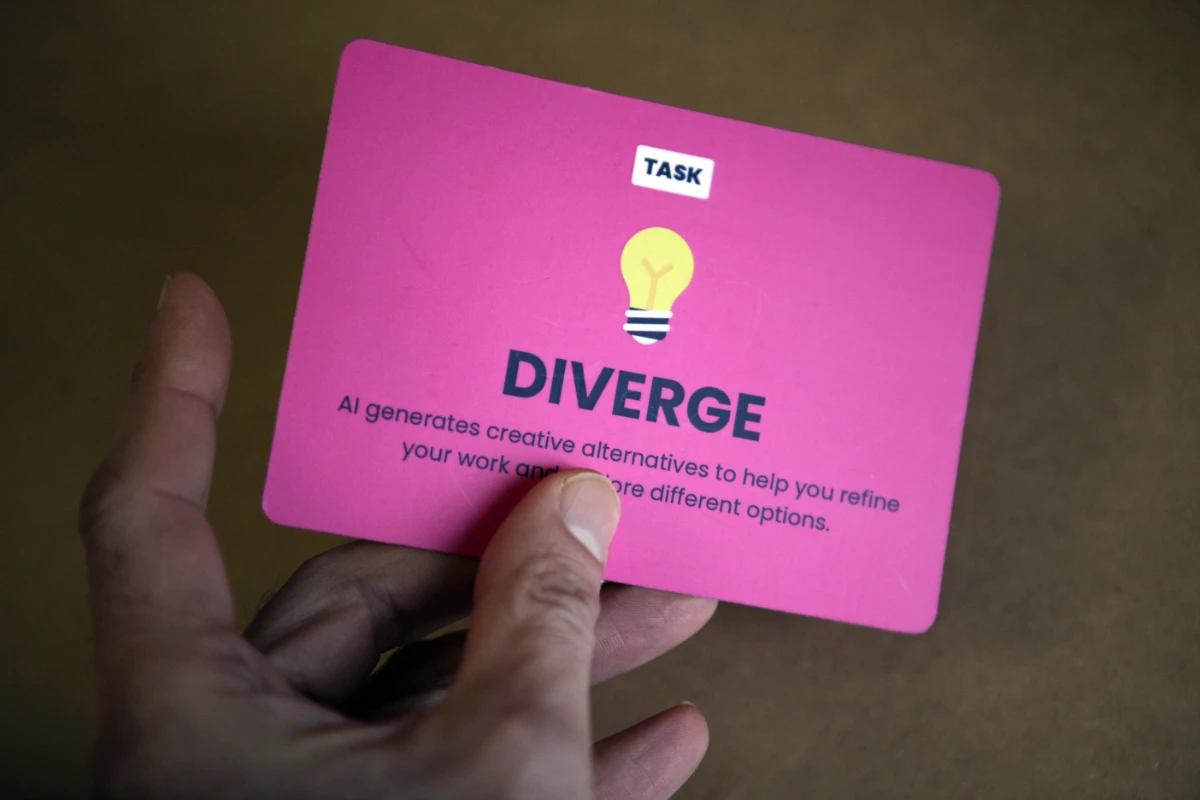Card Design Pattern: Flip The Card!
Today, we start with an iconic card design pattern...
The Pattern: Flip The Card!

The Flip The Card pattern is both one of the simplest card design patterns and is illustrative to the physical properties of a card.
A card has two sides, and this pattern leverages this physical property to create engagement and discovery. The front side typically presents a question, challenge, or partial information, while the back reveals the answer, solution, or complete information.
When to Use It
- Learning and Memory: Perfect for flashcards where questions appear on one side and answers on the other
- Progressive Disclosure: When you want to control the flow of information
- Engagement: Creates a moment of curiosity and interaction
- Validation: Allows learners to test their knowledge before seeing the answer
Examples
- Language Learning Cards
- Front: Word in native language
- Back: Translation and usage examples
- Technical Interview Prep
- Front: "What is the time complexity of QuickSort?"
- Back: "Average: O(n log n), Worst: O(n²)" with explanation
Even better!
If it works both ways: front to back and back to front.
The language learning card above works both ways, you can either start with the word in native language and guess the translation or start with the translation and guess the word.
Same pattern but two different learning activities and use cases!
How I used it in the AI Tinkerer's Cards
I used the pattern for each one of the DREAMS cards.
The card has the DREAM category on the front and a reflection question on the back (click the card to flip it).
Best Practices
- Clear Distinction: Make it obvious which side is front and back
- Balanced Content: Both sides should feel complete
Anti-Patterns
- Putting too much information on either side (wait for my future post about the infamously bad card-ocuments)
- Using the pattern when immediate visibility is crucial
- Making the front/back relationship unclear
Digital Implementation
In digital spaces, this pattern is often implemented through:
- Click/tap interactions (like my cute little cards here)
- Hover effects
- Swipe gestures
- 3D rotation animations
Remember: The power of this pattern lies in its simplicity. Use it to create moments of discovery and validation in your learning materials.
Translation System is Live!
I've set up a translation system for the AI Tinkerers' Cards, making it easy to translate and publish in any language.
Bolt, Replit, Lovable, and Cursor: Can AI Really Build Your Next App?
A deep dive into whether AI can build your next app even if you don't know a line of code—from the latest tools to practical strategies.